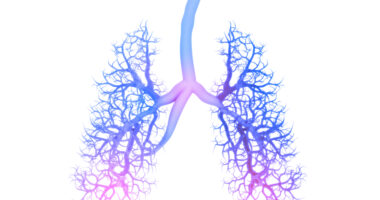Antibiotics Less Effective Against Mix of Microbes in Lung Infection

Antibiotics are less effective at treating lung infections in cystic fibrosis (CF) when there are multiple types of infectious microorganisms present, according to a new study.
“People with chronic infections often have co-infection with several pathogens, but the problem is we don’t take that into account in deciding how much of a particular antibiotic to treat them with. Our results might help explain why, in these people, the antibiotics just don’t work as well as they should,” Thomas O’Brien, the study’s co-first author, said in a press release. O’Brien did the research for his PhD at the University of Cambridge.
The study, “Decreased efficacy of antimicrobial agents in a polymicrobial environment,” was published in The ISME Journal.
CF is characterized by the buildup of thick, sticky mucus in the lungs and other organs. The mucus provides a comfortable home for disease-causing microorganisms and chronic lung infections are a common health problem for people with CF. Some of the microbes involved in CF lung infections include Pseudomonas aeruginosa and Staphylococcus aureus, both of which are bacteria, and Candida albicans, a fungus.
It’s not uncommon for a person to be infected with more than one of these agents simultaneously and microbiological research has shown that, when these organisms grow in a community together, they can affect each other’s disease-related behavior.
“It therefore seems very likely that interspecies interactions may also alter the response of pathogens [disease-causing agents] … to antimicrobial agents,” the researchers wrote.
Despite this likely connection, “traditional antimicrobial susceptibility testing does not take into account the presence of cohabiting species, nor does it consider how such microorganisms might affect the acquisition of resistance to antibiotics.”
To investigate how the presence of other microbes affects the response to treating individual pathogens, the researchers tested three anti-microbial medications: colistin, which targets Pseudomonas aeruginosa, fusidic acid, which targets Staphylococcus aureus; and fluconazole, which targets Candida albicans.
The microbes were grown, separately or together, in a dynamic artificial sputum model that the researchers had developed and described in detail in a 2019 study. The model is intended to mimic phlegm coughed up during an infection.
“This method of modeling the airways using artificial sputum, containing a mixture of bugs may provide a new way to test the effectiveness of new antimicrobial medicines,” Paula Sommer, PhD, said in a separate release. Sommer is head of research at the Cystic Fibrosis Trust, which helped fund this study.
Initial tests using the bacteria grown separately showed that all the tested agents worked in a species-specific manner, as expected. For example, colistin potently reduced Pseudomonas numbers, but had little effect on the other two microbes.
Comparisons of the microbes grown alone or in combination showed that the antimicrobial medications were markedly less potent against pathogens grown in combination.
For example, when Pseudomonas bacteria were grown alone, treatment with colistin reduced their numbers by about 10,000 times over three hours of treatment. However, when the bacteria were grown in the presence of Staphylococcus and Candida, the same treatment reduced Pseudomonas numbers by only about a hundredfold.
“We show a clear decrease in the efficacy of three clinically-used, species-specific antimicrobial compounds (colistin, fusidic acid, and fluconazole) against their target microorganism when that microorganism is grown as part of a steady-state polymicrobial consortium. This observation highlights the need to consider how co-habiting species might alter the response of a principal pathogen to a previously validated therapeutic intervention,” the researchers concluded.
They said the finding may explain why some antimicrobial treatments fail to clear infections in CF, even though the treatment can easily kill the bacteria in lab tests.
Experiments also indicated the resistance to treatment involved both physiological and adaptive elements — in other words, some microbes retained resistance to treatment even after other cohabiting microbes were removed, but in other cases, removing the other microbes also removed the treatment resistance. In Pseudomonas bacteria that remained resistant, the researchers identified some specific genetic changes that likely contributed to the treatment resistance.
“The problem is that as soon as you use an antibiotic to treat a microbial infection, the microbe will start to evolve resistance to that antibiotic. That’s what has happened since colistin started to be used in the early 1990’s. This is another reminder of the vital need to find new antibiotics to treat human infections,” said Martin Welch, PhD, a professor at Cambridge and the study’s senior author.








